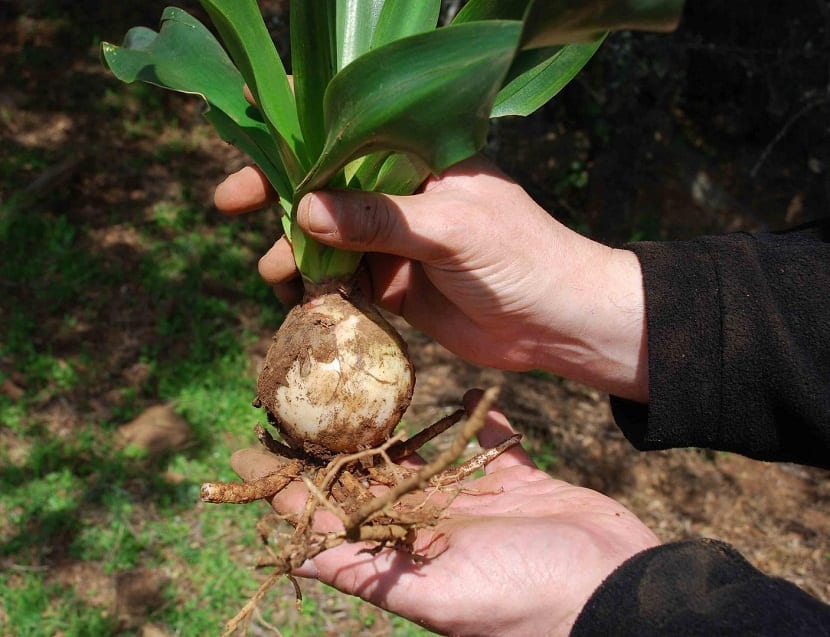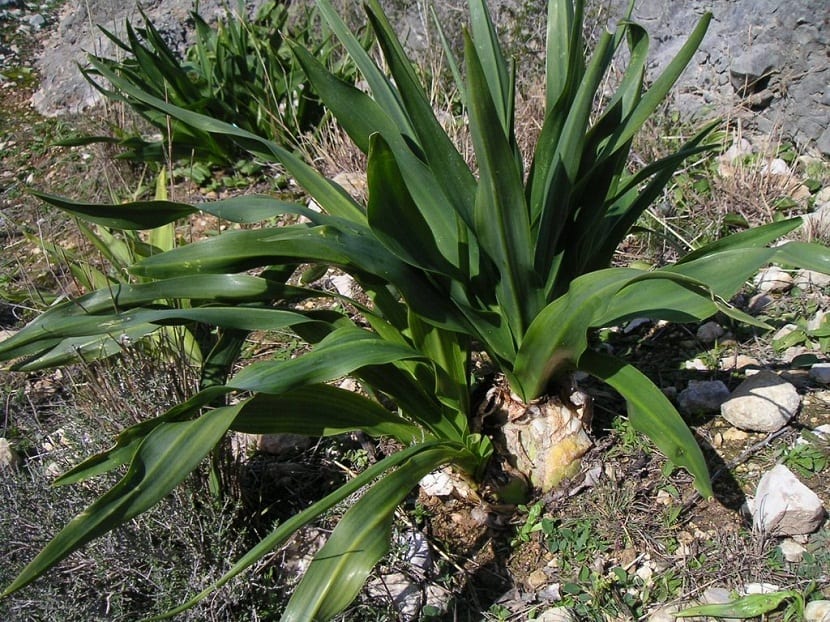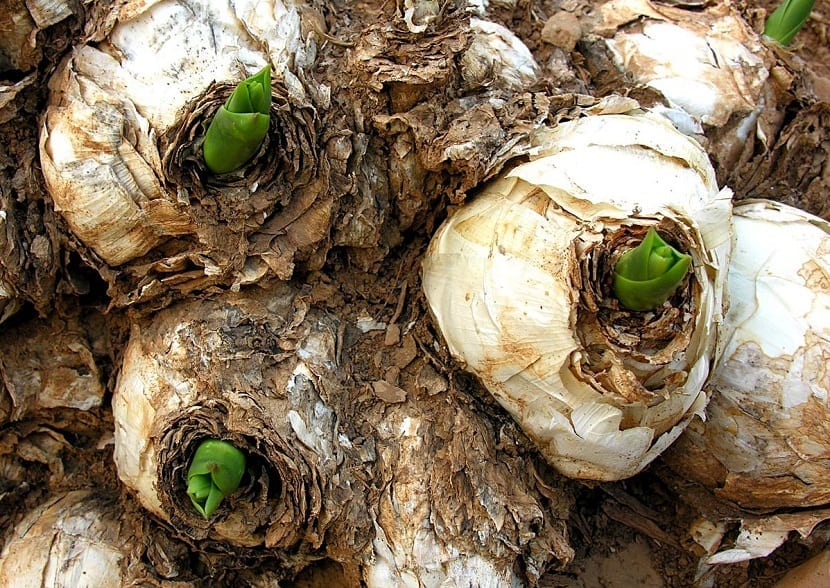
Maritime Urginea, known as Albarrana onion, Ceborracaha, Rook onion or Esquila, previously formed part of the Scilla family. Today it is located in the Liliácea and belongs to the genus Urginea made up of about 50 varieties of bulbous plants native to Africa, Europe and India.
This is distributed throughout the Mediterranean area and from the Canary Islands, the Atlantic coasts of Morocco and Portugal to the South of Iran. Also in France and Italy. Its qualifier pays tribute to the Algerian race of the Beni Urgin.
Features

It is an easy-to-grow herbaceous plant that he is five feet tall and has a large bulb 3,5 to 18 cm in diameter. It can be left to rest in dry ground so that when it germinates again it is planted in autumn.
Intense green leaves, broad, lanceolate which agglomerate in a rose without petioles, produce nectar as soon as they sprout, last from mid-October, all winter and part of spring and then die in summer to give way to their beautiful hermaphrodite flowers, arranged in clusters along their extensive stems without branches.
These bouquets arranged in inflorescences provided with 50 white flowers, in whose petals a long brown line is visualized that guides the nectar, give rise to the capsules (the fruit) where the black seeds are deposited, they multiply, taking five years to flower.
Care
It requires minimal care. Live on any type of soil and even withstands periods of droughtThat is why it does not require a lot of irrigation or fertilizers, since one fertilizer per year is enough. It does not resist puddles of water therefore the area where it is planted has to be well drained.
It grows in clearings of forests, bushes, pastures, maritime sands, wastelands, stony areas, meadows in full sun and also in semi-shade.
Although it is toxic, It was used with great rigor as a medicinal plant since ancient times Due to the glycosides contained mostly in the bulb, very useful to exterminate fleas. Grated or crushed, it is macerated in water and the soil of the pens and stables is moistened with the liquid.
In the Roman period with this plant the wounds of goats or sheep were healed. It was planted near the fig trees to protect it from rats and ants.
Properties
It is used to treat heart or circulatory problems as a bactericide, expectorant, digestive, diuretic and insecticide, for chilblains and warts, alleviating toothache. In application of sitz baths after cooking its leaves against hemorrhoids.
Today the pharmaceutical industry banned its use as an ingredient in food supplements or herbal products, since a poisoning with the vegetable causes nausea, vomiting, alteration of the heart rhythm and intestinal disorders.
It is not given to children, pregnant women or kidney patients, so you have to be very careful when handling it. Contact with the skin or mucous membranes causes ulcers and dermatitis. It is recommended not to use it in home medicine, there is no known safe dose for adults or children, so the ideal is always to consult a doctor.
Pests

Squash is not commonly attacked by typical garden pests, but when this happens, especially in dry areas, the hairy caterpillars of the butterfly Ocnogyna baetica and the beetles of the Thalacitesfritillus species eat its petals and flower buds. While the Hemiptera (bed bugs) are housed in it, during their reproductive cycle to mate, feed and raise their offspring.
Since the 90s, the Institute of Cultural Heritage of Spain has been carrying out tests with natural extracts to disable bacteria or fungi that originate in manuscripts, documents and books.
In the middle of the millennium, the project began after preparing a database, which stores essential information on the plants that can be used to avoid deterioration due to contamination of protein or cellulosic species that develop in said materials, one of them being the Urginea maritime among them.
So far the respective physical / chemical analyzes are being carried out. The plan is based on selecting experimental green treatments with natural products that act as fungicides, insect repellants and microbicides in general, that they preserve the materials in their integrity and guarantee both the well-being of people and the environment.